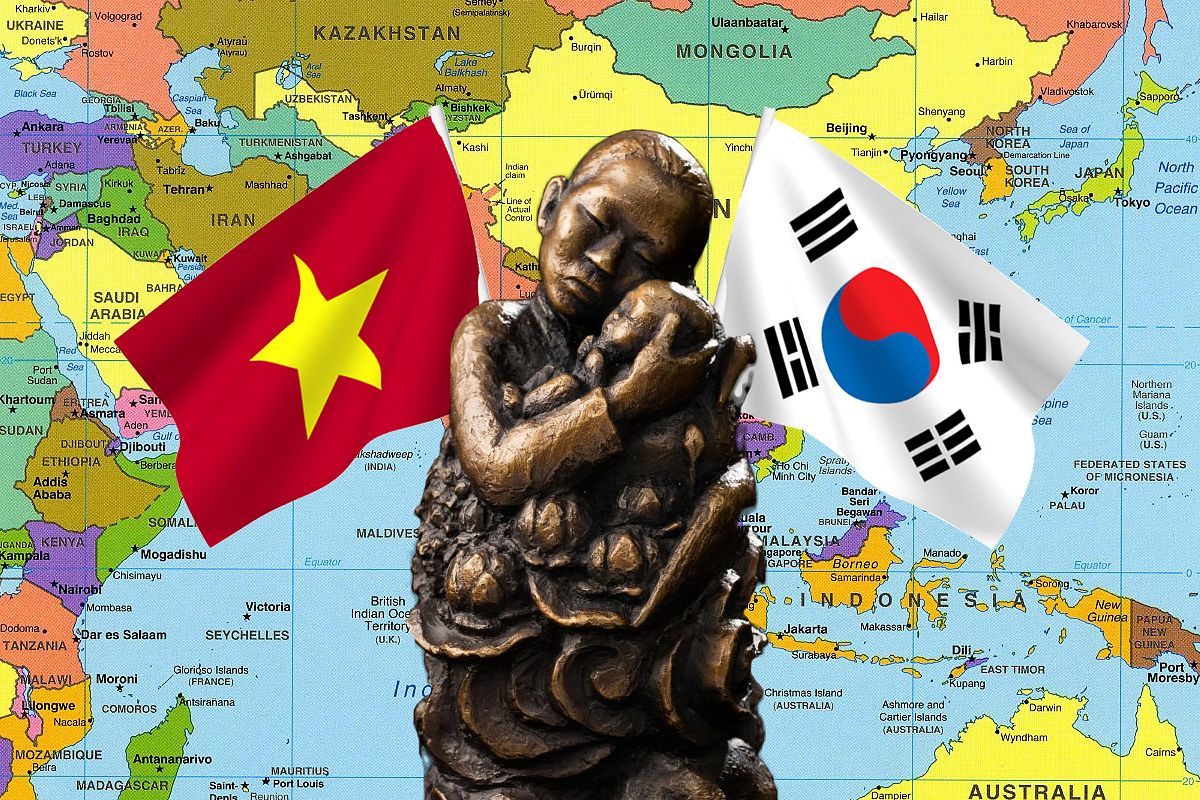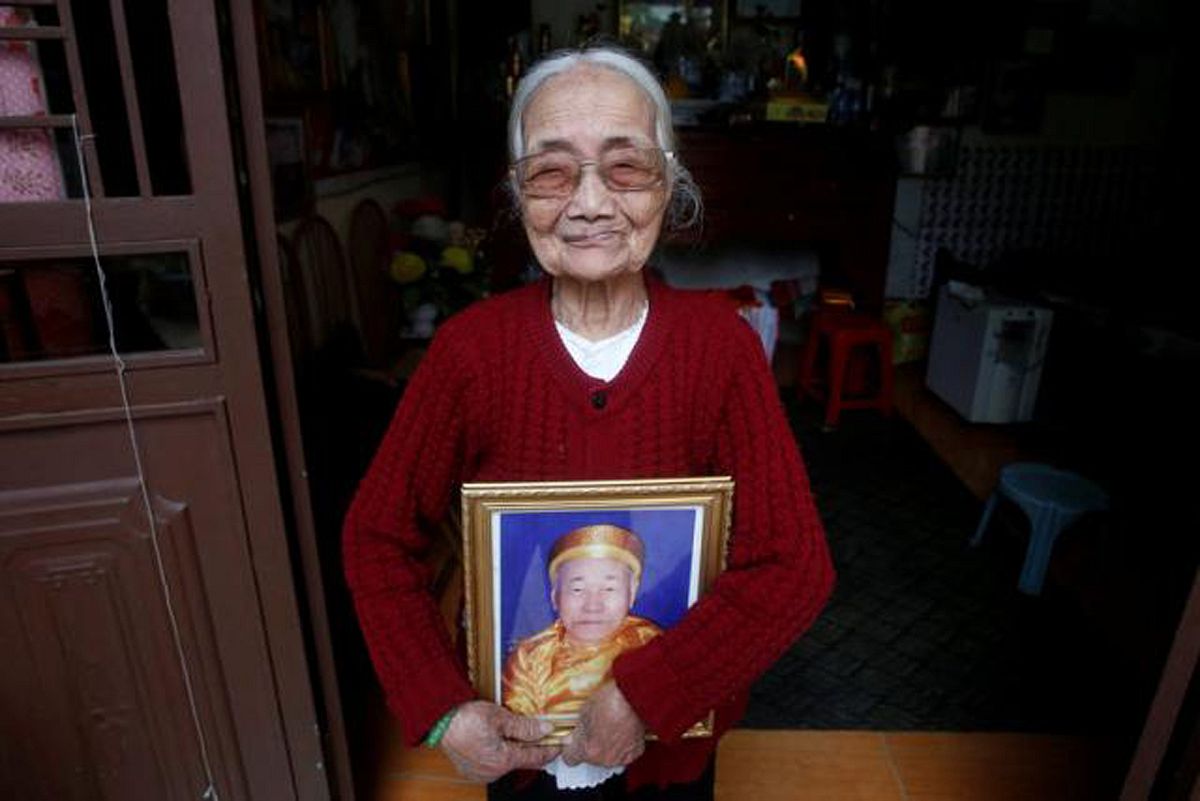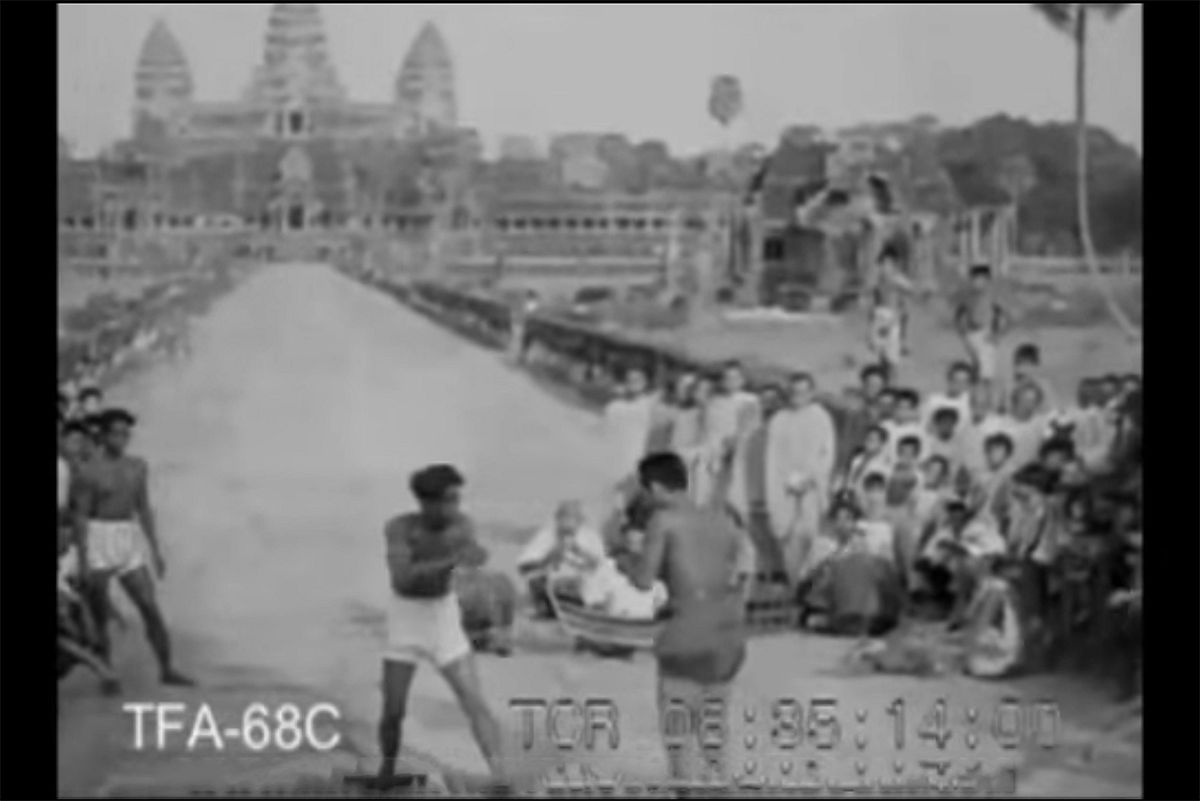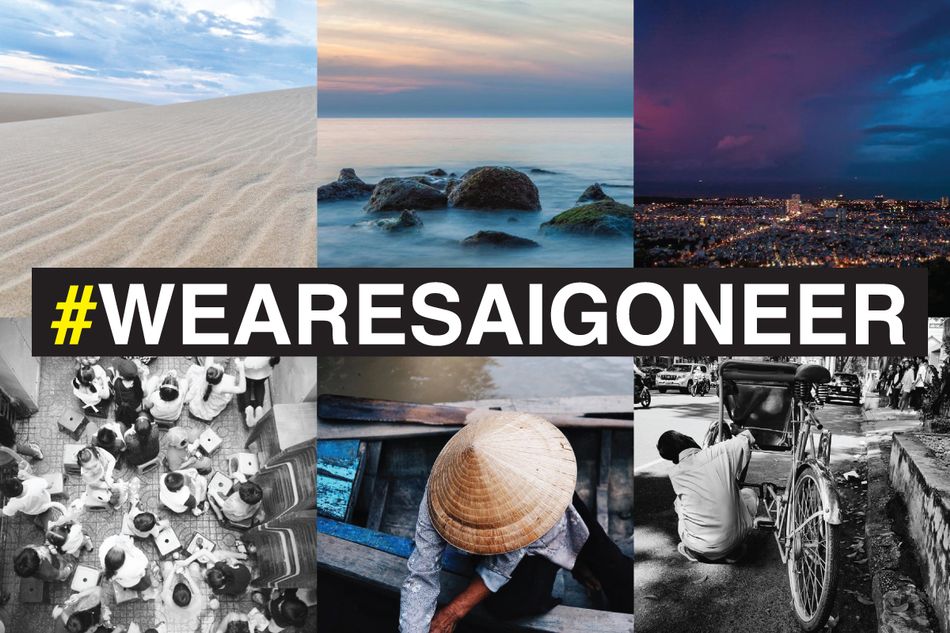Last week, the Korean-Vietnamese Peace Foundation sent a statue known as Vietnam Pieta – The Last Lullaby to the Da Nang Museum as an apology for South Korea’s involvement in the American War.
The delivery of the statue, created by South Korean artists Kim Seo Kyung and Kim Eun Sung, was part of a larger ceremony acknowledging the East Asian nation’s role in the conflict, reports VnExpress.
While the details of South Korea's involvement in the American War have long been kept quiet, the efforts of organizations like the Peace Foundation help to preserve, document and disseminate information and artifacts, calling on the South Korean government to take responsibility for its actions in the war and to shed light on a chapter in history that has affected both countries.
Apart from Vietnam Pieta – The Last Lullaby, a bronze statue of a woman embracing her child, the Peace Foundation also sent 30 photos from their An Apology to Vietnam exhibition, according to VietnamNet, six pictures of which commemorated the victims of massacres by Republic of Korea (ROK) troops, as well as books and documentary films about the war.

Vietnam Pieta - The Last Lullaby. Photo via VietnamNet.
Ever since Vietnam and the ROK normalized diplomatic relations in 1992, there has been little discussion of the latter’s involvement in the armed conflict. However a contributor to South Korean news outlet Hankyoreh estimated that roughly 5,000 civilians in villages in Khanh Hoa, Binh Dinh, Phu Yen, Quang Ngai and Quang Nam were victims of search-and-destroy operations by ROK forces, though some estimates run as high as 9,000 civilians.
In addition, the declassification of documents at the United States National Archives and Record Administration in June 2002 revealed the truth about massacres at Phong Nhi and Phong Nhat (Febuary 12, 1968), Hoan Chau (October 22, 1968) and Phuoc My (April 15, 1969), the news outlet reports.
South Korea first deployed troops to Vietnam in September 1963, according to a 1992 New York Times article. The East Asian nation’s role in the war followed a call for assistance by the United States as part of the Free World Military Forces. From then until April 1975, South Korea contributed 312,853 soldiers to the fight.
The South Koreans had plenty of motivation to take part in the war. After reaching an armistice with North Korea in 1953, the ROK was still very poor. Joungwon Alexander Kim, author of Divided Korea: The Politics of Development 1945-1972, asserts in an article from the Journal of World Affairs that the most important reason for the ROK’s commitment to the war was its need for more assistance from the United States in order to develop the country.
But American aid wasn’t the only deciding factor in South Korea’s decision to join the fight, as the country’s leadership was also ideologically opposed to North Vietnam. A year earlier, then-President Park Chung-hee – the father of incumbent South Korean president Park Geun-hye – famously told his people: “If we fail to block the communist invasion of South Vietnam, we will lose the whole of Southeast Asia, and the security of ROK itself cannot be guaranteed. We have received aid from other countries in the past, and now the time has come in history when we [are] able to help others”, according to Kim’s Journal of World Affairs article.
The South Koreans had long been aware of the threat posed by a strong China. Even though they yearned for reunification with North Korea, the war on communism was meant to protect the ROK's border from any possible attack by its neighbor.
The US, in exchange for its ally’s participation in the war, agreed to pay the total cost of transporting the additional troops. Apart from that, what really incentivized the ROK’s commitment was the American promise to provide loans, training and other technical assistance to help promote exports from South Korea to South Vietnam, Southeast Asia and a variety of American development projects. The Military Assistance Program would even replace US goods with Korean goods, paid in dollars.

Lee Yong Soo, a member of the Korean-Vietnamese Peace Foundation and former "comfort woman" bows before Vietnam Pieta - The Last Lullaby and a statue commemorating South Korean "comfort women" in Seoul. Photo via Tuoi Tre.
Such benefits meant ROK soldiers were highly motivated on the battlefield, but they were also guilty of civilian casualties during the war. For instance, Alex Doherty writes in telesur that in February 1968 at Ha My Hamlet near Da Nang, “after herding villagers to two killing sites, [the ROK Blue Dragon Brigade] opened fire with machine guns and fragmentation grenades. The killing went on for two hours and by the time they had finished their work 135 Vietnamese lay dead.” Most of these victims were women, children and the elderly.
ROK forces attacked North Vietnamese troops using a tactic at which they excelled: guerilla combat. Unlike American forces, who preferred operations supplemented by air support, the Koreans moved in close and attacked areas considered “safe havens” by North Vietnamese troops. Indeed, night patrols were the forte of the infamous ROK Tiger Brigade.
In recent years, Vietnamese media and survivors of the ROK massacres have spoken out, creating increased pressure on South Korea to acknowledge its role in the war. According to KoreaBANG, a 2014 Segye Ilbo article reported that Vietnamese officials had requested South Korea refrain from celebrating the 50th anniversary of its involvement in the war, while outlets like Tuoi Tre have published articles detailing the lasting effects of South Korean atrocities.
While the South Korean government has never officially apologized for its role in the American War, South Korean civilians and organizations such as the Peace Foundation have made efforts to atone for the actions of ROK forces a half-century ago. In February of this year, Hankyoreh reports, a peace delegation traveled to Vietnam to commemorate the 50th anniversary of the Binh An Massacre, in which over 1,000 Vietnamese civilians died. At an official ceremony, South Korean professor and peace delegation leader Roh Hwa-wook offered a heartfelt apology for his country's involvement in the war.














